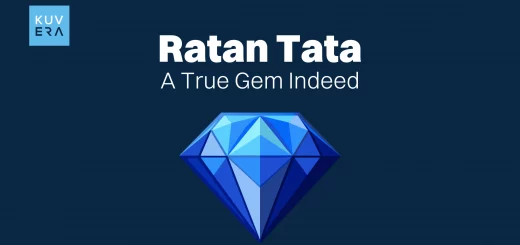A very common question that is asked around diversification is “What is a good portfolio?” One that has all equity shares or the one with all small-cap stocks or only large cap, or a mix? Well, defining whether a portfolio is good or bad is subjective. But a good portfolio definitely is diversified.
But what does diversification mean? Here’s all you need to know about diversification of investment portfolio.
What is the Art of Diversification?
Diversification is the art of managing risk. It is a strategy that involves spreading your investments across a range of different asset classes. The idea is to reduce the risk of your investment portfolio by not putting all your eggs in one basket.
Let’s say you have ₹10,000 to invest. Instead of putting all of it into a single stock or asset class, such as technology stocks, you can diversify by distribute some of your money into stocks, bonds, real estate and commodities.
By diversifying, you are not overly exposed to the performance of any single asset or sector. If one investment performs poorly, the impact on your investment portfolio is minimised because other investments may be performing better.
This strategy helps to smooth out the ups and downs of the stock market and can potentially improve the risk-adjusted returns of your portfolio over the long term. It’s important to note that diversification does not guarantee profits or eliminate risk entirely, but it can help manage risk and improve the chances of achieving your financial goals.
Imagine going to a buffet and only ordering that one favourite dish that you are sure you’d like.

Sticking to one dish is safe but you are possibly missing out on what could be great dishes. The same goes with investments. If you are planning to go with only one asset class, you could be missing out on assets with better returns. Or one that keeps your portfolio from deep-diving when some assets don’t perform. In diversification, we rise and stand tall.
What is Diversification in Personal Finance?
The concept of diversification uses the principle of non-correlation or low correlation among assets. Correlation measures the degree to which the price movements of two assets are related. Assets with low or negative correlations either move independently of each other in opposite directions. Conversely, highly correlated assets move alongside each other. By combining assets with different correlations, the portfolio’s volatility can be decreased.
Modern portfolio theory, developed by Harry Markowitz in the 1950s, explains the concept of diversification. It suggests that by combining assets with different risk and return characteristics, you can achieve potentially better returns at a given level of risk.
How do I Diversify my Portfolio?
The process of diversification begins with asset allocation. You choose a mix of asset classes based on your risk tolerance, investment goals and time frame. Common asset classes include stocks, bonds, real estate, commodities and cash equivalents. Within each asset class, you can further diversify by selecting separate sectors.
For instance, within the stock portion of a portfolio, you can invest in companies of different sizes such as large-cap, mid-cap and small-cap. You can distribute your funds in various industries like technology, healthcare and consumer goods. Another criterion for diversification is geographical regions i.e., domestic, international and emerging markets.
Similarly, within the bond portion of a portfolio, diversification can involve investing in bonds with different maturities like short-term, intermediate-term and long-term. You can further invest in funds based on their credit qualities, like whether the fund issuers are government, corporate or municipal.
Diversification also extends beyond traditional asset classes to alternative investments such as hedge funds, private equity, and real assets like commodities and infrastructure. These investments have the potential of uncorrelated returns to traditional stocks and bonds. By doing so, you can protect yourself from the risk of not breaking all the eggs in your basket at once.
How do Mutual Funds help to naturally achieve diversification?
Investing in mutual funds helps in diversification. How do you ask?
Mutual funds provide a convenient way for you to invest in a diversified portfolio without having to manage it yourself. They provide diversification by investing in a range of assets such as stocks, bonds and other commodities. By spreading the investment over multiple assets, a mutual fund reduces the risk for you.
Asset Management Companies (AMCs) pool money from multiple investors to invest in a diversified portfolio of securities, such as stocks, bonds or a combination of both. Mutual funds are managed by fund managers who select and manage the investments on behalf of the investors.
Here’s an example. Consider you have a mutual fund that invests in large-cap stocks. This fund may hold a diversified portfolio of large-cap stocks across different sectors, such as technology, healthcare, consumer goods and financial sectors. By investing in this mutual fund, you are exposed to a diversified portfolio of large-cap stocks without having to individually select and manage each stock yourself.
Similarly, mutual funds are available for other asset classes such as bonds, real estate and international stocks. So, you have diversification across different asset classes within a single investment vehicle.
Want to know more about Index Funds? Click here.
How do Index Funds offer Diversification?
Index funds offer you a wide range of securities within a particular market index. These funds replicate the performance of a specific index, such as the S&P 500. They do this by holding the same proportion of securities as the index itself. This strategy allows you to gain a diversified reach to a large number of stocks, bonds or other securities within the index.
Plus, they offer low turnover ratios as they only buy or sell securities when the index composition changes. So, your mutual funds have lower transaction costs. So, even more returns for you.
Be it market volatility, economic downtrend or any unexpected events, diversification can navigate you through the ups and downs of the share market.
Interested in how we think about the markets?
Read more: Zen And The Art Of Investing
Watch here: Why Diversification is Important
Start investing through a platform that brings goal planning and investing to your fingertips. Visit kuvera.in to discover Direct Plans and Fixed Deposits and start investing today.












